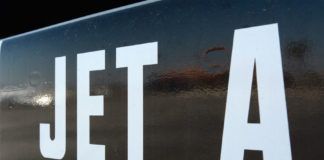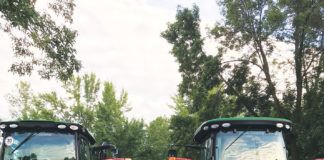 Confluence Avenue
Confluence Avenue
![]()
I enjoyed Paul Dyes Free Flight column, A confluence of little things, in the August issue. Id like to make my own contribution.
While attending the Arlington Fly-In, I got an opportunity one day after the show had closed for the day, to fly my helicopter and check out my radio via a conversation with my wife on the ground, who was to use our VHF handheld. The helicopter flight pattern is pretty much out of the way of the normal stuck wing guys, so off I went, parallel to the runway but off to one side. Shortly after leaving the end of the runway and looking down at nothing but houses and swimming pools, I heard a loud banging noise.
First I thought the passengers seatbelt got out of the open doorway and was banging on the fuselage. This had happened to me once while flying skydivers. I quickly checked the door and nothing was hanging out the door. The noise continued, and I searched for a place to put the helicopter down-it sounded like I was about to lose some sheet metal.
I contacted the tower controllers and told them I had an emergency and needed to get back on the ground. They informed me that there was a formation takeoff in progress, and I would have to tuck in and avoid the runway area. More stress. Banging continued.
The words: Aviate, Navigate, and Communicate sounded off in my head. I aimed the helicopter back at the field, keeping below the formation takeoff in progress, all the time getting ready to have to do an autorotation to the ground. The banging continued, but I was able to get the helicopter down on the grass near the wind tee. The banging stopped when I hovered. I locked down the controls and stepped out-but everything was OK.
A close examination of the passengers headset, complete with boom mic, showed it strapped in the passengers seatbelt and the tip of the seatbelt had been banging on the boom mic when I was in forward flight. The banging was coming through the intercom right into my headset. I didn’t need a headset in the passengers seat for a solo flight. For sure I didn’t need it plugged into the intercom where the banging seatbelt end could activate the VOX. This was truly a confluence of little things!
Stuart Fields
Thunderbird Snub
With great interest I read your article about aircraft for $35,000 or less. What astonished me was that you did not mention Thunderbird Aviations products. A single-seat biplane ready to fly for $21,900 is to me an eye-opener. A two-seat quickbuild kit for $23,900 is something to talk about. I live and fly in Spain with a single-seat SN-8 of the former Sorrell factory, and I wonder why nobody knows about this pretty airplane. I had a mishap with my plane (a bird strike), and the help from Ron Jones (Thunderbirds boss) was absolutely fantastic. Why did this aircraft not appear in your issue?
Hans Koeners
Dont worry. Thunderbirds product are on our radar. Look for more coverage in a future issue.-Ed.
Primer Primer
I followed Dave Martins RV-12 story with great interest as that may be my next bird! How can I get info from him about the decision-making behind his interior corrosion-proofing philosophy? The lack of which was conspicuous by its absence in the series.
Tom Markunas
Dave Martin replies: I think the decision on interior corrosion-proofing depends a lot on where and how the airplane will be flown. I live in the Willamette Valley in Oregon, where humidity most of the time is relatively low, except when its raining, which is a lot less often than most people seem to think. More important, my hangar is dry, insulated well, and heated to keep a minimum of 50 F, mostly to maintain steel tools in good shape.
The amount of anticipated outside exposure also was considered. Realistically, I don’t expect to fly many long cross-country trips in the -12, so its exposure to the elements will be minimal. My decision was the same as most certified sheet metal airplane manufacturers: Don’t invest the time, weight and money on inside corrosion-proofing of the Alclad aluminum. On the other hand, I followed the Vans corrosion-proofing requirement to the letter, which was to prime and paint the few parts made of extruded aluminum and also prime and paint (two-part epoxy) some areas such as the entire cockpit for cosmetics and abrasion protection.
Acronyms Again!
In the August 2010 issue I was reading about the CAFE foundation. Interesting stuff. However, it would be helpful if when using an acronym for the first time, you state what the letters mean.
Gerry White
Were trying! CAFE stands for Comparative Aircraft Flight Efficiency.-Ed.




